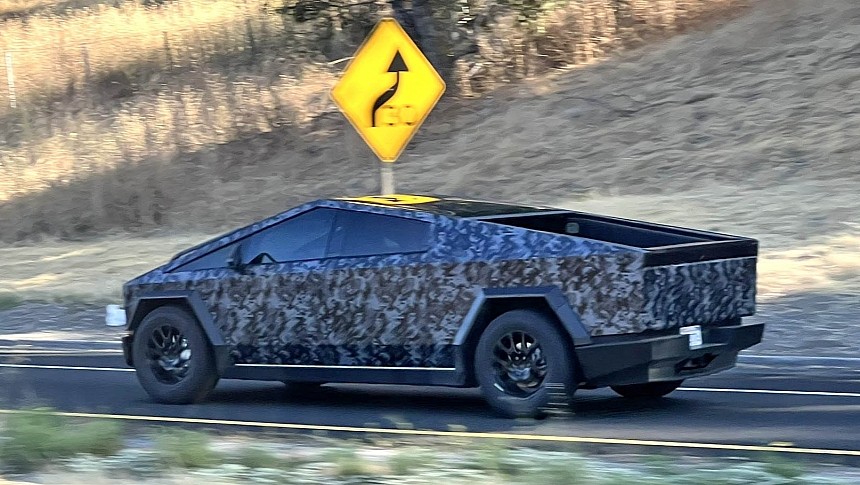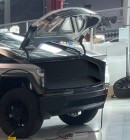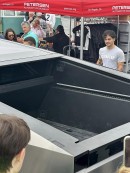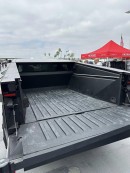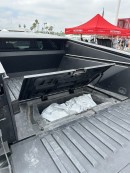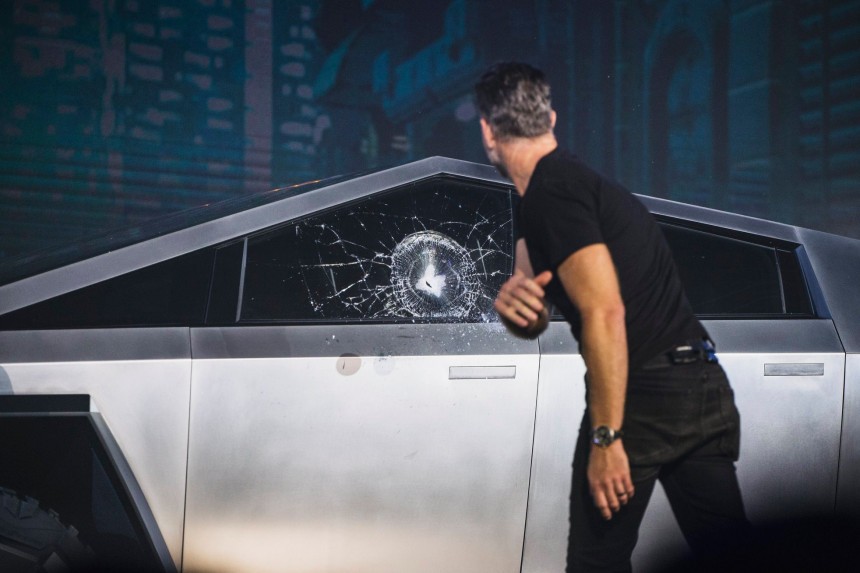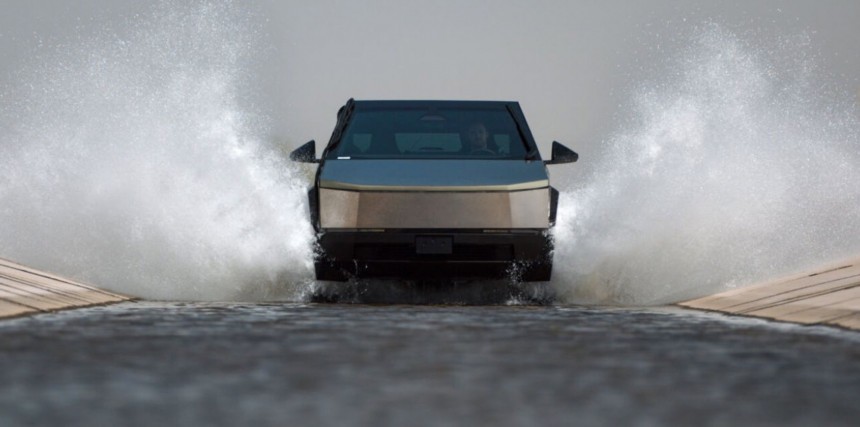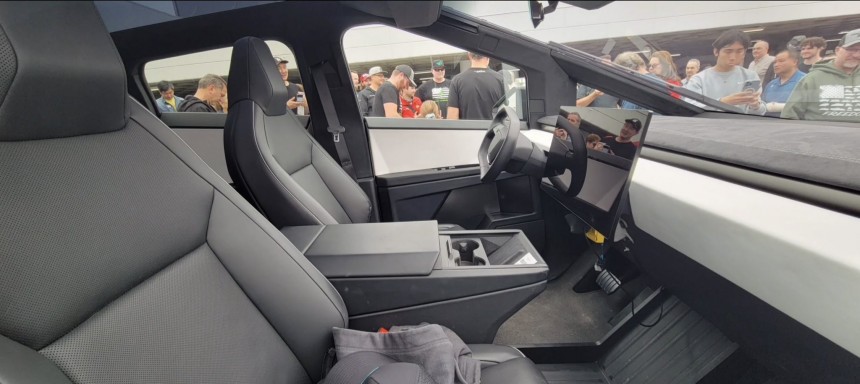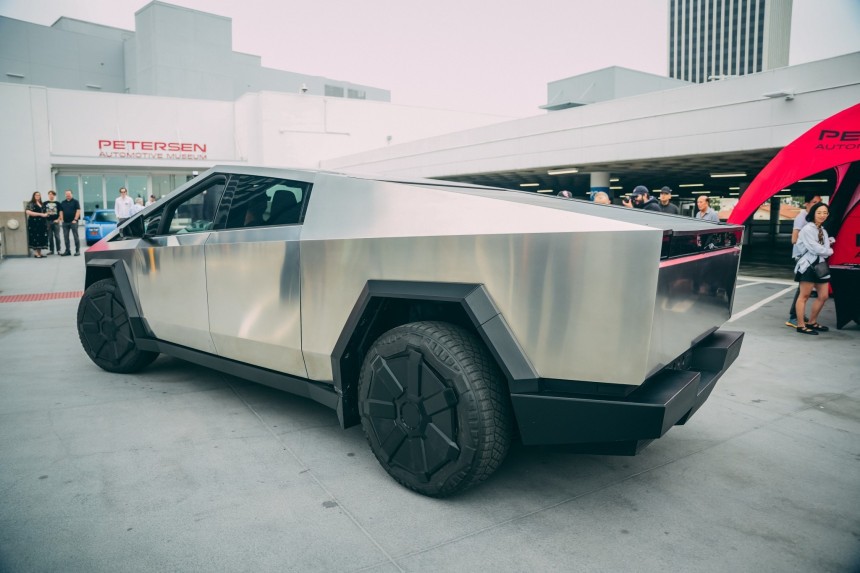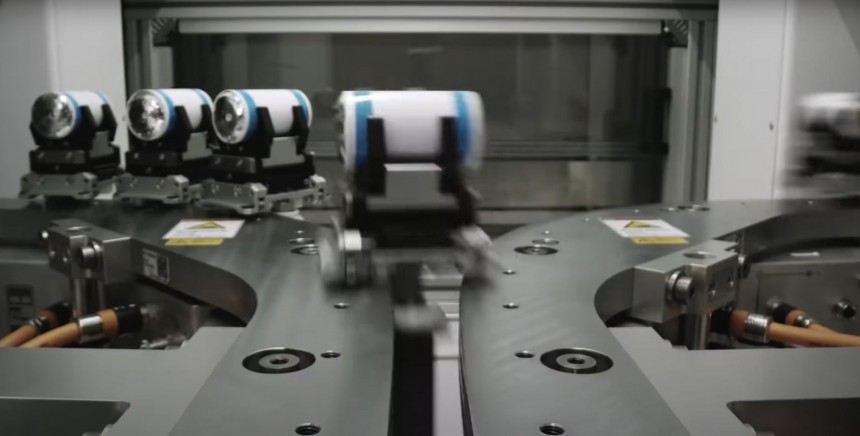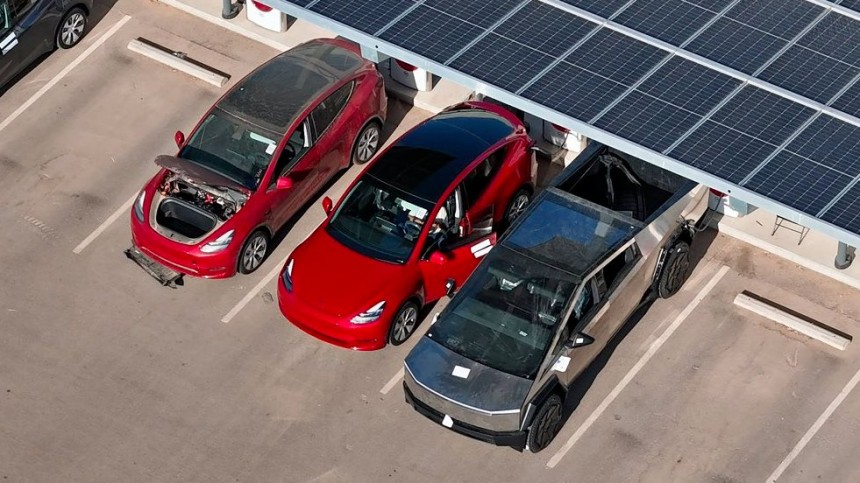The Tesla Cybertruck may be only a month away from the first deliveries, but details about it are still scarce. I've put together every piece of information I've got so far from Tesla, the Tesla community, and my own observations to offer you a picture of what the Cybertruck will be.
Despite seeing the outlandish pickup truck almost daily on the roads in California and Texas, there are very few things people know for sure. I suspect this is by design, as Tesla loves letting its fans do the heavy lifting for it. The official information offered is barely enough to stir up speculation. Yet, there's no shortage of Cybertruck news in the public space. This can be good or bad, depending on who sets the agenda.
As Tesla is now a mainstream brand, the wonderful community created in the early days is often muffled by critics. With a booming addressable market, Tesla EVs are now bought and judged by many more people from all walks of life, who may not care much about Tesla's mission or Elon Musk. And so it should be because what matters for most customers is the product, not people, not the mission, not politics. People want to buy a truck or a car, and how they relate to it depends on how well it serves them.
Tesla certainly started the Cybertruck saga with a bang when its chief designer Franz von Holzhausen threw the ball in the window and broke the armored glass. Many described this stunt as a monumental failure when, in fact, it was a PR triumph, even if by mistake. The peculiar Cybertruck design was already a conversation starter, but the broken window was the icing on the cake. Two days after the unveiling, Elon Musk tweeted that the Cybertruck had already amassed 146K reservations. Pretty impressive for a broken window, isn't it?
In the years that followed, the Tesla Cybertruck has been downsized until it got to the size we're accustomed to today. The best hint we've got was during the second-quarter earnings call when Musk said that the Cybertruck will be the first sub-19 feet truck with four doors and a 6+ feet bed. This means the production Cybertruck shrank almost 4 inches compared to the early prototypes, including the one on display at the Petersen Automotive Museum.
Tesla communicated a towing capacity of "at least 14,000 lbs" (6,350 kg), which is still on Tesla's website. This is 40% more than the Ford F-150 Lightning, although the latter has a ladder frame instead of a structural battery pack. Tesla claims it gets its strength from the exoskeleton structure. However, many structural experts expressed doubts that the Cybertruck has an exoskeleton. Either way, it would be interesting to see if Tesla sticks with this impressive towing capacity for the final specifications of the Cybertruck.
The electric pickup was announced with three drivetrain configurations, with single- (RWD), dual- and three-motor available to order. The single-motor didn't prove popular with people who placed a reservation, according to Musk, and it is likely to have been scrapped. All other electric pickups on the market have at least two motors, so it's reasonable to expect that the Cybertruck will not fall behind. Since then, rumors about a quad-motor configuration have been floating around.
Tesla removed the Cybertruck's specifications from its website in 2021, but the internet has a good memory. According to the original specifications, the single-motor Cybertruck would go from 0 to 60 mph (97 kph) in 6.5 seconds and reach a top speed of 110 mph (177 kph). The dual motor raises the stakes to 4.5 seconds and 120 mph (193 kph), while the top-specced truck could do the 0-60 trick in 2.9 seconds and top out at 130 mph (209 kph). The driving range was announced at 250, 300, and 500 miles (400, 480, and 800 km), respectively. Still, recent rumors seem to indicate that the first Cybertrucks rolling off the production line at Giga Austin will have a 350-mile (560-km) range.
The original Cybertruck was announced with six seats in a two-row configuration, which many truck fans remember from the good old days. Although the final design appears to have ditched the center front seat, the Tesla website still presents the Cybertruck as having six seats. This should be hard to offer, considering safety constraints on a modern vehicle. Tesla would rather have an airbag between the front seats, as more and more models feature today, than a third front airbag.
Tesla promised that the Cybertruck would offer 100 cu-ft (2,830 liters) of exterior lockable storage, including the under-bed, frunk, and sail pillars. The former two options were seen on the beta-production truck, although they failed to impress anyone. Rivian R1T owners mocked the small under-bed storage, which can't be used to store a spare tire. The frunk was also underwhelming, at least compared to the Ford F-150 Lightning. I've never seen the sail-pillar storage on the release-candidate model, although hopes are still high.
The Cybertruck will also offer power and compressed air onboard, which its competitors already offer. The Rivian R1T has them both, but bi-directional charging is still in development. Ford F-150 Lightning has the Pro Power Onboard feature, including bi-directional charging, but no onboard air compressor. Tesla could offer all these features and rule them all. The bi-directional charging capability has been recently confirmed in an unusual way, with the feature depicted in a coloring book for children.
Although air suspension is not a groundbreaking feature, Elon Musk said that the Cybertruck should be able to compete at Baja. For this purpose, he said three years ago that he is considering increasing the suspension dynamics beyond the 4-inch (102 mm) up and down initially advertised. The Cybertruck should also have self-leveling capabilities, a great feature for camping on uneven terrain.
The most intriguing feature of the Cybertruck would probably be its capability to "serve briefly as a boat," as Elon Musk famously said. People mocked him, saying that a car falling off a cliff can also serve briefly as a plane. Still, I haven't seen the Cybertruck showcasing amphibious capabilities until now, so I still doubt this would be possible. Like most electric vehicles (not to mention electric trucks), the Cybertruck is heavy, so floating might not be its best quality.
Finally, the rear-wheel steering should make the Cybertruck maneuverable in tight parking spaces. The earlier prototypes were fitted with such a system, although later, we've seen trucks with fixed rear wheels. I still don't know whether this means the rear-wheel steering system is optional or Tesla was struggling with the implementation. Whatever the case, the latest pickup trucks spotted in the wild had rear-wheel steering.
Still, the first pictures of the Cybertruck frame revealed that this would not be the case, something that teardown veteran Sandy Munro confirmed a while back. Sandy assumed that the exoskeleton did not work as intended and that going for plan B was the reason for the many delays the Cybertruck program experienced. The latest Cybertruck structure shows that the electric pickup is more closely related to the unibody Honda Ridgeline. There's nothing wrong with that, except that a unibody structure is far less capable of offering work truck features, mostly towing and payload capacity.
The Cybertruck is not even unibody, considering that most of its platform is based on the structural battery pack design. This will likely put a considerable strain on the battery pack while towing unless Tesla figures out a solution. Although Elon Musk recently reiterated that the Cybertruck would indeed have an exoskeleton, I think he mainly refers to the hard outer shell made of Ultra-Hard 30X Cold-Rolled stainless steel. Still, these panels must be attached to the underlying structure and not the other way around.
The good news is that Tesla is working on a second generation of the cells using improved chemistry. This offers a 10% improvement in energy density, which puts them on the same level as the legacy 2170 cells. It's not the breakthrough Tesla announced in 2020 at Battery Day, but it's still progress. Interestingly, this improvement is achieved without using a silicon anode or the dry cathode manufacturing process, both features being announced but still not production-ready.
The second-generation 4680 cell production process has also been improved, resulting in a scrap bill reduced by 40% and costs cut by 25%. Still, it hasn't improved enough to make them available to other models, including the Model Y. I can tell that by the fact that Tesla and Elon Musk called them "Cybercells," implying that they are unique to the Cybertruck. This might change in the future as the yields improve, but for now, I expect the battery supply to continue to be the main bottleneck for Cybertruck production.
A couple of years ago, Elon Musk admitted that there wasn't an easy solution to the windshield wiper problem. Still, Tesla went with the worst possible implementation. Besides the jokes created on its account, the gigawiper, as it was called, proved inefficient in cleaning the windshield. Tesla should seriously consider adding a second wiper on the passenger's side, something other models with a big windshield featured for decades.
A recent photo shared by Tesla for the second quarter earnings call shows that the windshield remains covered in mud despite the gigawiper being in use. This might be an edge case, but the fact that almost half the windscreen is not covered by the wiper, even in ideal conditions, is a huge issue. Tesla is still in the process of getting the certifications, and the wiping performance should be concerning for the regulators.
Still, the Cybertruck has a very short front console, so hopes for a big frunk were not very high. Heck, people weren't even sure a frunk was planned. The first pictures with the front hood open weren't very revealing, which made speculations mount. Still, a recent photo showing the Cybertruck inside a research facility revealed that the frunk might not be that big. Interestingly, the industry gold standard was set by Ford with the F-150 Lightning frunk. The Chevy Silverado EV seems to also have a huge frunk.
The latest jokes about the Cybertruck's frunk say that the gigawiper is so big that there wasn't much room left for a frunk. The clearest picture yet of the frunk shows it goes the whole Cybertruck's front width but is relatively shallow. It's still big enough to hold many things but nowhere near the F-150 Lightning's capacity. It might be better for longer objects, though, as the Lightning's frunk is narrower.
This is why the price can make or break the Cybertruck. Elon Musk has sent mixed signals regarding the pricing strategy. During May 16 Investor Day, he said the Cybertruck would not be cheap, considering the new manufacturing process and the technologies involved. Still, two months later, Musk declared the Ford F-150 Lightning as "somewhat expensive." This came right after Ford slashed the price of its electric pickup by as much as $10K, hinting at a more affordable Cybertruck.
If this is an indication, I'd say the first Cybertruck variants should retail at less than $80,000. This doesn't exclude more expensive (think Plaid, at over $100K) and cheaper (maybe around $60,000) versions of the truck. Tesla will likely aim to qualify for the IRA tax credit, which is offered for trucks under $80,000. Tesla battery cell production and supply chain would not be a problem, as was demonstrated earlier with the LFP variants of the Model 3. The fact that the tax credit applies at the point of sale in 2024 is a significant advantage.
Although the original prices were taken off Tesla's website in 2021, the internet memory is not easily erasable. Tesla said that the most affordable Cybertruck, the single-motor variant, would start at $39,990. Considering that the cheapest Model 3 is more than that, I'd say you should confidently add at least $10K to that price. That is, if Tesla will offer a single-motor variant after all. The dual-motor Cybertruck was priced at $49,990, with the most expensive option at $69,990. I still feel a $20K above these prices would not be unexpected.
This could jump up or down, depending on the price and features. If the Cybertruck proves exciting and aggressively priced, more of the 2 million reservation holders will order the truck. If not, we'll see a wave of canceled reservations, with waiting times dropping accordingly. Production bottlenecks and other factors could also influence Tesla's ability to meet demand. One thing is certain: even if only 10% of people who reserved a truck will follow through with the purchase, Tesla's first two years of production are essentially sold out.
As Tesla is now a mainstream brand, the wonderful community created in the early days is often muffled by critics. With a booming addressable market, Tesla EVs are now bought and judged by many more people from all walks of life, who may not care much about Tesla's mission or Elon Musk. And so it should be because what matters for most customers is the product, not people, not the mission, not politics. People want to buy a truck or a car, and how they relate to it depends on how well it serves them.
Tesla Cybertruck specifications: many promises, few hard facts
The Tesla Cybertruck was developed having the Ford F-150 as a measuring stick, which was understandable, considering this was the best-selling truck on the market. In 2017, Musk said that the Cybertruck should be similar in size to the Ford F-150, "maybe slightly bigger to account for a really game-changing feature" he wanted to add. Tesla even imagined the Cybertruck could carry a pickup truck in its bed.In the years that followed, the Tesla Cybertruck has been downsized until it got to the size we're accustomed to today. The best hint we've got was during the second-quarter earnings call when Musk said that the Cybertruck will be the first sub-19 feet truck with four doors and a 6+ feet bed. This means the production Cybertruck shrank almost 4 inches compared to the early prototypes, including the one on display at the Petersen Automotive Museum.
Tesla communicated a towing capacity of "at least 14,000 lbs" (6,350 kg), which is still on Tesla's website. This is 40% more than the Ford F-150 Lightning, although the latter has a ladder frame instead of a structural battery pack. Tesla claims it gets its strength from the exoskeleton structure. However, many structural experts expressed doubts that the Cybertruck has an exoskeleton. Either way, it would be interesting to see if Tesla sticks with this impressive towing capacity for the final specifications of the Cybertruck.
Tesla removed the Cybertruck's specifications from its website in 2021, but the internet has a good memory. According to the original specifications, the single-motor Cybertruck would go from 0 to 60 mph (97 kph) in 6.5 seconds and reach a top speed of 110 mph (177 kph). The dual motor raises the stakes to 4.5 seconds and 120 mph (193 kph), while the top-specced truck could do the 0-60 trick in 2.9 seconds and top out at 130 mph (209 kph). The driving range was announced at 250, 300, and 500 miles (400, 480, and 800 km), respectively. Still, recent rumors seem to indicate that the first Cybertrucks rolling off the production line at Giga Austin will have a 350-mile (560-km) range.
Some of the Cybertruck's best features
Much has been written about the Cybertruck's revolutionary features. However, not all have been demonstrated in the recent sightings of the pre-production model. I saved the most controversial topics for a more in-depth discussion below so that I can talk now about the little details that can make a difference. The most obvious is the armored glass that broke during the 2019 unveiling ceremony. I don't know why Tesla would offer such a thing on a truck, but it could prove an interesting addition to the extras list.The original Cybertruck was announced with six seats in a two-row configuration, which many truck fans remember from the good old days. Although the final design appears to have ditched the center front seat, the Tesla website still presents the Cybertruck as having six seats. This should be hard to offer, considering safety constraints on a modern vehicle. Tesla would rather have an airbag between the front seats, as more and more models feature today, than a third front airbag.
The Cybertruck will also offer power and compressed air onboard, which its competitors already offer. The Rivian R1T has them both, but bi-directional charging is still in development. Ford F-150 Lightning has the Pro Power Onboard feature, including bi-directional charging, but no onboard air compressor. Tesla could offer all these features and rule them all. The bi-directional charging capability has been recently confirmed in an unusual way, with the feature depicted in a coloring book for children.
Although air suspension is not a groundbreaking feature, Elon Musk said that the Cybertruck should be able to compete at Baja. For this purpose, he said three years ago that he is considering increasing the suspension dynamics beyond the 4-inch (102 mm) up and down initially advertised. The Cybertruck should also have self-leveling capabilities, a great feature for camping on uneven terrain.
The most intriguing feature of the Cybertruck would probably be its capability to "serve briefly as a boat," as Elon Musk famously said. People mocked him, saying that a car falling off a cliff can also serve briefly as a plane. Still, I haven't seen the Cybertruck showcasing amphibious capabilities until now, so I still doubt this would be possible. Like most electric vehicles (not to mention electric trucks), the Cybertruck is heavy, so floating might not be its best quality.
The exoskeleton debate
One of the most controversial features of the Cybertruck is its promised exoskeleton structure. This is something never attempted in the automotive world, where the structural elements are not underneath but on the outside. If you want something comparable in the animal world, it's a beetle versus a vertebrate. Many people thought the Cybertruck would use its outer skin as a structural element instead of having a ladder frame.Still, the first pictures of the Cybertruck frame revealed that this would not be the case, something that teardown veteran Sandy Munro confirmed a while back. Sandy assumed that the exoskeleton did not work as intended and that going for plan B was the reason for the many delays the Cybertruck program experienced. The latest Cybertruck structure shows that the electric pickup is more closely related to the unibody Honda Ridgeline. There's nothing wrong with that, except that a unibody structure is far less capable of offering work truck features, mostly towing and payload capacity.
The Cybertruck is not even unibody, considering that most of its platform is based on the structural battery pack design. This will likely put a considerable strain on the battery pack while towing unless Tesla figures out a solution. Although Elon Musk recently reiterated that the Cybertruck would indeed have an exoskeleton, I think he mainly refers to the hard outer shell made of Ultra-Hard 30X Cold-Rolled stainless steel. Still, these panels must be attached to the underlying structure and not the other way around.
Cybercells to the rescue
Although Tesla also has a structural battery pack based on 2170 cells, the Cybertruck will be powered by Tesla's new 4680 cells. I guess the reason is the added rigidity and strength offered by the bigger cells, which are responsible for much of Cybertruck's towing performance. There's only one problem, though: the 4680 cell production is still below expectations. Not only are yields lower than planned, but the performance offered by the new cells is also disappointing. That's why the Tesla Model Y, built at Giga Austin with 4680 cells, has a smaller battery capacity.The good news is that Tesla is working on a second generation of the cells using improved chemistry. This offers a 10% improvement in energy density, which puts them on the same level as the legacy 2170 cells. It's not the breakthrough Tesla announced in 2020 at Battery Day, but it's still progress. Interestingly, this improvement is achieved without using a silicon anode or the dry cathode manufacturing process, both features being announced but still not production-ready.
What's up with the Gigawiper?
Another controversial feature of the Cybertruck is its gigantic wiper. Granted, the truck's windshield is large, but most of the problems people see with the gigawiper stem from Tesla insisting on using a single wiper. The problem is exacerbated by the fact that aerodynamic efficiency dictates that the wiper sits vertically and is always in plain sight. This way, the wiper direction matches the wind flow, posing the least wind resistance.A couple of years ago, Elon Musk admitted that there wasn't an easy solution to the windshield wiper problem. Still, Tesla went with the worst possible implementation. Besides the jokes created on its account, the gigawiper, as it was called, proved inefficient in cleaning the windshield. Tesla should seriously consider adding a second wiper on the passenger's side, something other models with a big windshield featured for decades.
A recent photo shared by Tesla for the second quarter earnings call shows that the windshield remains covered in mud despite the gigawiper being in use. This might be an edge case, but the fact that almost half the windscreen is not covered by the wiper, even in ideal conditions, is a huge issue. Tesla is still in the process of getting the certifications, and the wiping performance should be concerning for the regulators.
The latest drama: the frunk is rather small
The Cybertruck's front trunk (or frunk, as EV people call it) has been an important feature, especially as Tesla pioneered the concept. The Tesla Model S impressed everyone by offering a frunk courtesy of its electric powertrain. Despite being a popular feature, the frunk is still not widely available on other EV models. Many carmakers prefer to use the space for air conditioning components and other systems because that's how they have done things for decades.The latest jokes about the Cybertruck's frunk say that the gigawiper is so big that there wasn't much room left for a frunk. The clearest picture yet of the frunk shows it goes the whole Cybertruck's front width but is relatively shallow. It's still big enough to hold many things but nowhere near the F-150 Lightning's capacity. It might be better for longer objects, though, as the Lightning's frunk is narrower.
Pricing can make or break the Tesla Cybertruck
The big question mark is how much the Cybertruck will cost. Tesla keeps this under wraps, even though the delivery event is expected next month. Much of Cybertruck's success depends on the pricing strategy Tesla will adopt. It's clear by now that Tesla's electric pickup is not as revolutionary as it would have been two years ago. Without some killer features, it will have to compete for market share with existing models while fighting controversies, starting with its design.This is why the price can make or break the Cybertruck. Elon Musk has sent mixed signals regarding the pricing strategy. During May 16 Investor Day, he said the Cybertruck would not be cheap, considering the new manufacturing process and the technologies involved. Still, two months later, Musk declared the Ford F-150 Lightning as "somewhat expensive." This came right after Ford slashed the price of its electric pickup by as much as $10K, hinting at a more affordable Cybertruck.
If this is an indication, I'd say the first Cybertruck variants should retail at less than $80,000. This doesn't exclude more expensive (think Plaid, at over $100K) and cheaper (maybe around $60,000) versions of the truck. Tesla will likely aim to qualify for the IRA tax credit, which is offered for trucks under $80,000. Tesla battery cell production and supply chain would not be a problem, as was demonstrated earlier with the LFP variants of the Model 3. The fact that the tax credit applies at the point of sale in 2024 is a significant advantage.
So when could I get one?
Last time I checked, about 2 million reservation holders paid the $100 fee for the privilege of waiting in line to get the Cybertruck. The numbers increased rapidly after the second-quarter earnings call when Tesla announced the production start at Giga Austin. Earlier, Musk revealed that he aims at an annual 250k-500-unit output, depending on demand. This production level will not be achieved in the first year, so expect long waiting times. Current estimates indicate a five-year waiting time.This could jump up or down, depending on the price and features. If the Cybertruck proves exciting and aggressively priced, more of the 2 million reservation holders will order the truck. If not, we'll see a wave of canceled reservations, with waiting times dropping accordingly. Production bottlenecks and other factors could also influence Tesla's ability to meet demand. One thing is certain: even if only 10% of people who reserved a truck will follow through with the purchase, Tesla's first two years of production are essentially sold out.
